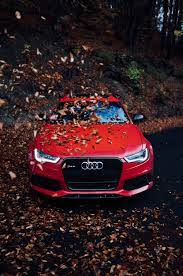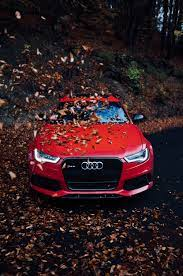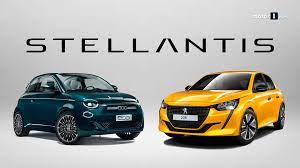hyundai

https://blog.gaadibazaar.in/popular-models-of-4-wheel-trucks-in-india
Testoomg
Manufactured with highly advanced technology solutions that aid in excellent mileage and fuel along with superior working efficiency, 4-wheel trucks are perfect for in-city transporters. These trucks can carry more load than small commercial vehicles.
Listed below are 5 good 4-wheel trucks in India:
Tata 407 Gold SFC Truck
Manufactured with highly advanced mobility solutions, the Tata 407 Gold SFC truck has a 98 HP engine power along with a BS – VI engine norm that provides efficient mileage. It has a 60 L fuel tank that aids in running long distances and reducing time wasted in refilling fuel.
This model has 3 variants which are Tata 407 Gold SFC 2955/HDLB, Tata 407 Gold SFC 2955/CBC, Tata 407 Gold SFC 2955/FSD.
Ashok Leyland Dost+ Pick up
It has a 1.5 L, i-GEN 6 technology diesel engine that provides high durability and reliability. One of the best choices when transporting good in rugged terrains, this high-capacity truck is one of the best in the market.
This vehicle comes in 3 variants which are Ashok Leyland Dost+ LX, Ashok Leyland Dost+ LE Ashok Leyland Dost+ LS.
Ashok Leyland Bada Dost Pickup
This is one of the most popular truck because of its excellent fuel efficiency and high performance. The 40 L fuel tank delivers long working hours. This truck is among the affordable ones in the Indian market.
This model has 5 variants which are Ashok Leyland BADA DOST 2590/FSD/i3, Ashok Leyland BADA DOST 2590/CBC/i4, Ashok Leyland BADA DOST 2590/CBC/i3, Ashok Leyland BADA DOST 2590/FSD/i4, Ashok Leyland BADA DOST 2590/HSD/i4.
Ashok Leyland Partner 4 Tyre
One of the most versatile truck models, this commercial vehicle is highly regarded for being fuel efficient. Giving good mileage, this model fits best for in-city transport.
This heavy-duty vehicle comes in 4 variants which are Ashok Leyland Partner 4 Tyre 3335/HSD/14 ft truck, Ashok Leyland Partner 4 Tyre 3335/FSD/14 ft truck, Ashok Leyland Partner 4 Tyre 2685/HSD/10 ft truck and Ashok Leyland Partner 4 Tyre 2685/FSD/10 ft truck.
Tata 710 LPT truck
This is a huge 60 L fuel tanked truck that provides long working hours. It is also pocket friendly in the Indian market and gives good mileage.
It comes in 2 variants which are Tata 710 LPT 3000/CAB truck and Tata 710 LPT 3000/HD truck.
About the Author
Large-scale, production-line manufacturing of affordable cars was started by Ransom Olds in 1901 at his Oldsmobile factory in Lansing, Michigan, and based upon stationary assembly line techniques pioneered by Marc Isambard Brunel at the Portsmouth Block Mills, England, in 1802. The assembly line style of mass production and interchangeable parts had been pioneered in the US by Thomas Blanchard in 1821, at the Springfield Armory in Springfield, Massachusetts.[40] This concept was greatly expanded by Henry Ford, beginning in 1913 with the world's first moving assembly line for cars at the Highland Park Ford Plant.
As a result, Ford's cars came off the line in 15-minute intervals, much faster than previous methods, increasing productivity eightfold, while using less manpower (from 12.5 manhours to 1 hour 33 minutes).[41] It was so successful, paint became a bottleneck. Only Japan black would dry fast enough, forcing the company to drop the variety of colors available before 1913, until fast-drying Duco lacquer was developed in 1926. This is the source of Ford's apocryphal remark, "any color as long as it's black".[41] In 1914, an assembly line worker could buy a Model T with four months' pay.[41]
Ford's complex safety procedures—especially assigning each worker to a specific location instead of allowing them to roam about—dramatically reduced the rate of injury.[42] The combination of high wages and high efficiency is called "Fordism" and was copied by most major industries. The efficiency gains from the assembly line also coincided with the economic rise of the US. The assembly line forced workers to work at a certain pace with very repetitive motions which led to more output per worker while other countries were using less productive methods.
In the automotive industry, its success was dominating, and quickly spread worldwide seeing the founding of Ford France and Ford Britain in 1911, Ford Denmark 1923, Ford Germany 1925; in 1921, Citroën was the first native European manufacturer to adopt the production method. Soon, companies had to have assembly lines, or risk going broke; by 1930, 250 companies which did not, had disappeared.[41]
Development of automotive technology was rapid, due in part to the hundreds of small manufacturers competing to gain the world's attention. Key developments included electric ignition and the electric self-starter (both by Charles Kettering, for the Cadillac Motor Company in 1910–1911), independent suspension, and four-wheel brakes.
Since the 1920s, nearly all cars have been mass-produced to meet market needs, so marketing plans often have heavily influenced car design. It was Alfred P. Sloan who established the idea of different makes of cars produced by one company, called the General Motors Companion Make Program, so that buyers could "move up" as their fortunes improved.
Reflecting the rapid pace of change, makes shared parts with one another so larger production volume resulted in lower costs for each price range. For example, in the 1930s, LaSalles, sold by Cadillac, used cheaper mechanical parts made by Oldsmobile; in the 1950s, Chevrolet shared bonnet, doors, roof, and windows with Pontiac; by the 1990s, corporate powertrains and shared platforms (with interchangeable brakes, suspension, and other parts) were common. Even so, only major makers could afford high costs, and even companies with decades of production, such as Apperson, Cole, Dorris, Haynes, or Premier, could not manage: of some two hundred American car makers in existence in 1920, only 43 survived in 1930, and with the Great Depression, by 1940, only 17 of those were left.[41]
In Europe, much the same would happen. Morris set up its production line at Cowley in 1924, and soon outsold Ford, while beginning in 1923 to follow Ford's practice of vertical integration, buying Hotchkiss (engines), Wrigley (gearboxes), and Osberton (radiators), for instance, as well as competitors, such as Wolseley: in 1925, Morris had 41 per cent of total British car production. Most British small-car assemblers, from Abbey to Xtra, had gone under. Citroën did the same in France, coming to cars in 1919; between them and other cheap cars in reply such as Renault's 10CV and Peugeot's 5CV, they produced 550,000 cars in 1925, and Mors, Hurtu, and others could not compete.[41] Germany's first mass-manufactured car, the Opel 4PS Laubfrosch (Tree Frog), came off the line at Rüsselsheim in 1924, soon making Opel the top car builder in Germany, with 37.5 per cent of the market.[41]
In Japan, car production was very limited before World War II. Only a handful of companies were producing vehicles in limited numbers, and these were small, three-wheeled for commercial uses, like Daihatsu, or were the result of partnering with European companies, like Isuzu building the Wolseley A-9 in 1922. Mitsubishi was also partnered with Fiat and built the Mitsubishi Model A based on a Fiat vehicle. Toyota, Nissan, Suzuki, Mazda, and Honda began as companies producing non-automotive products before the war, switching to car production during the 1950s. Kiichiro Toyoda's decision to take Toyoda Loom Works into automobile manufacturing would create what would eventually become Toyota Motor Corporation, the largest automobile manufacturer in the world. Subaru, meanwhile, was formed from a conglomerate of six companies who banded together as Fuji Heavy Industries, as a result of having been broken up under keiretsu legislation.
Latest Blogs from this Author


 07941055729
07941055729




























 Previous
Previous






















